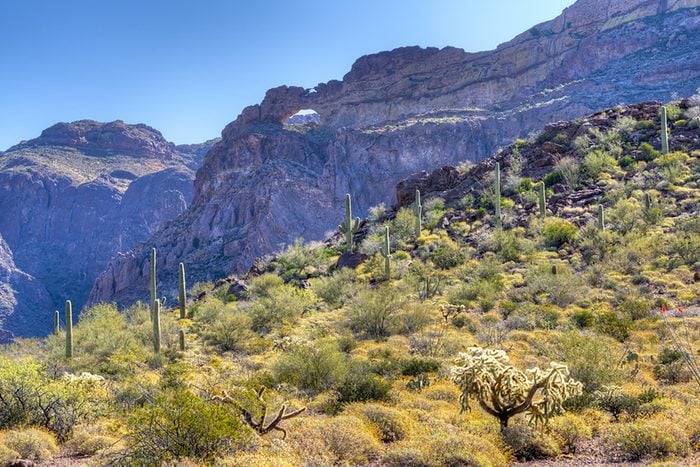
Organ Mountains-Desert Peaks National Monument, New Mexico
Organ Mountains-Desert Peaks is one of the newest national monuments, established in May of 2014 by presidential proclamation. This is not a national park, but is a national monument that is managed by the Bureau of Land Management Las Cruces District Office. This monument lies in southeastern New Mexico and is made up of the Organ Mountains, Desert Peaks, Potrillo Mountains, and Doña Ana Mountains. Home to several rare species of plants and animals, ancient Native American petroglyphs, and lava flows, these desert mountains look like nowhere else on Earth. There are excellent opportunities for hiking, mountain biking, rock climbing, and nature photography in the 496,330 acre monument, as well as overnight camping. The Aguirre Spring Campground is the only developed campground in the monument, with first-come-first-serve family campsites available for $7 per night. You can also go primitive camping anywhere in the monument for free. Either way, bring plenty of water and sunscreen (there’s very little shade out in the Chihuahuan Desert!), and know your fitness level before attempting any long or strenuous hikes. Before you go hiking, make sure you remember these 32 things park rangers want you to know prior to your trip.
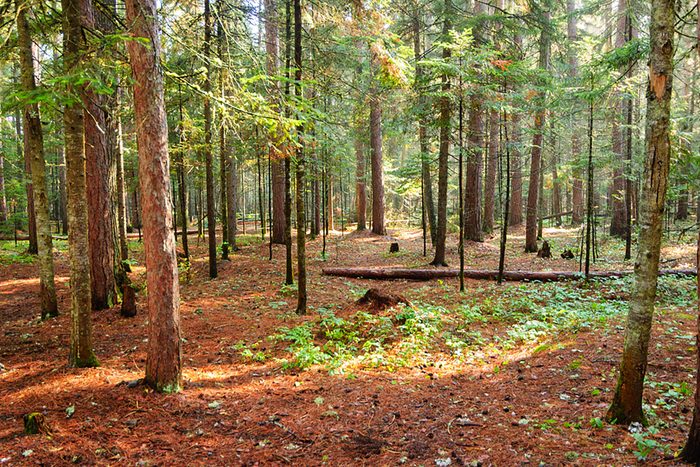
Katahdin Woods and Waters National Monument, Maine
The Katahdin Woods is an even newer National Park site, created in 2016 on the eve of the National Park Service’s 100th anniversary. Located in northern Maine, the Katahdin Woods and Waters National Monument preserves more than 87,500 acres of wild rivers and lush forests. In addition to hiking and camping, Katahdin is a great spot for hunting, fishing, and kayaking. The newness of this monument means that it has little infrastructure relative to older, more established national parks: there’s no official visitor’s center, and some trails aren’t well-marked or -maintained. However, it also means that there will be much smaller crowds than some of the more popular national parks. Be sure to check the weather conditions before your trip, and come prepared: You’ll need some sturdy, well-maintained hiking boots and perhaps some trekking poles to traverse these rocky forest trails.
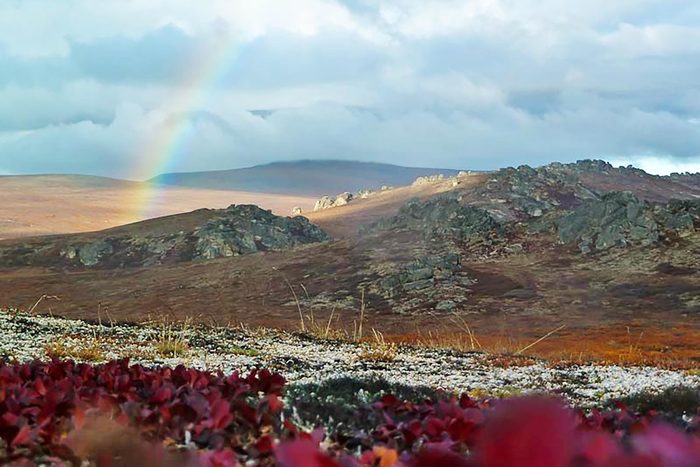
Bering Land Bridge National Preserve, Alaska
In 2014, only 2,636 people visited the Bering Land Bridge National Preserve, according to the National Parks Conservation Association. This is partly because of the sometimes extreme weather conditions in the preserve, but mostly because there are no roads that lead into it. The brave few who make it into the preserve by air taxi or boat are greeted with otherworldly vistas: towering rock formations, geothermic hot springs, and sweeping glacial plains. Although remote today, this area was heavily trafficked during the Ice Age, when ancient humans migrated from Europe and Asia into the Americas via the now nonexistent Bering Land Bridge. To visit the Bering Land Bridge National Preserve, you can charter a commercial air taxi from several small towns around the preserve. Once there, you can stay overnight at the bunkhouse and soak in the relaxing Serpentine Hot Springs. If swimming is part of your vacation to-do list, check out these amazing natural swimming pools in the United States.
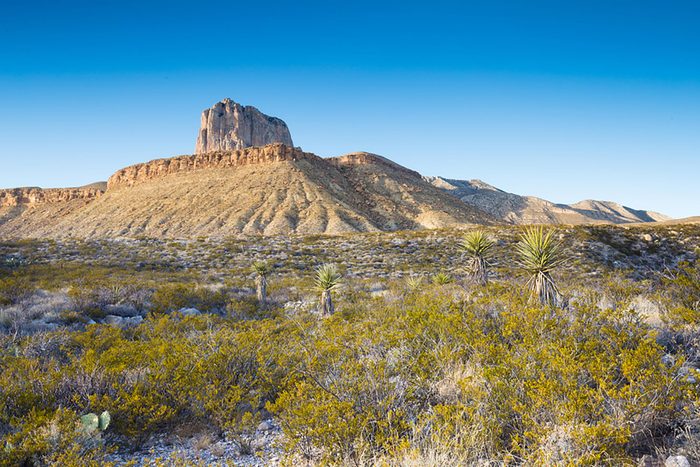
Guadalupe Mountains National Park, Texas
The rugged, beautiful Guadalupe Mountains jut out of the high desert landscape near the Texas-Mexico border dramatically. The most visually striking point is El Capitan, the massive cliff that towers over the rest of the park. You can also wander the Salt Basin Dunes, 2,000 acres of shockingly white gypsum sand dunes. This infrequently visited national park is ideal for hiking and backpacking, with a range of different trails for different ability levels and breathtaking vistas of the surrounding canyons. If you’re taking one of the longer, more strenuous hikes, bring plenty of water and some protein-rich snacks. Note that all the campgrounds are primitive, meaning you’ll have to hike in all your water. The park has a day use fee of $5, and the first-come, first-serve campsites cost $8 per night. Next, check out these other amazing national parks for camping.
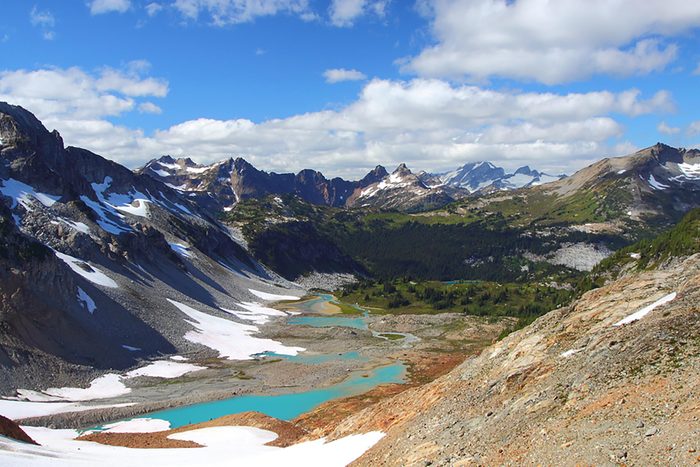
North Cascades National Park, Washington
Located just a 3-hour drive from Seattle, it’s a wonder that more people don’t visit the North Cascades National Park. Though the snowy peaks of the North Cascades are treacherous in the winter, the park turns into a lush, green paradise in the warmer months, filled with evergreen mountain valleys and crystal clear glacial lakes. (Outside of Alaska, the North Cascades is one of the best national parks to see glaciers!) From the visitor’s center you can take a guided nature hike or learn more about the Native American history of the area. Or you can go fishing or canoeing in the beautiful Hozomeen Lake, Stehekin River, and Ross Lake. There are several developed campgrounds for car and RV camping throughout the park, all of which you can reserve through recreation.gov. How to get there? We suggest driving the breathtaking North Cascades Highway.
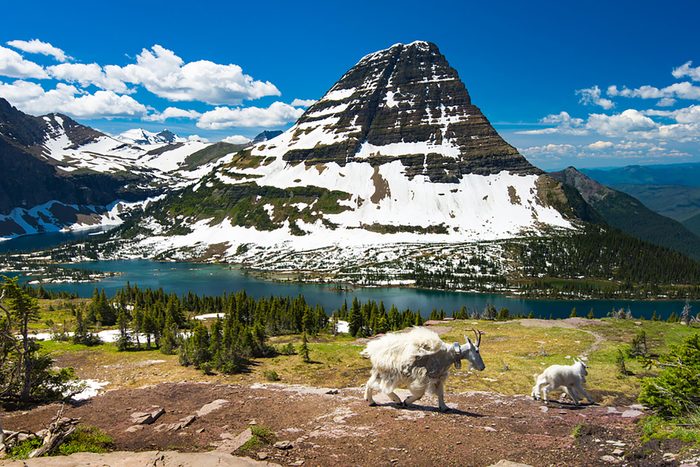
Glacier National Park, Montana
Another glacial wonderland, Glacier National Park in northern Montana is known as the “Crown of the Continent” because it serves as the headwaters for rivers and streams that go to the Pacific Ocean, the Gulf of Mexico, and the Hudson Bay. Glacier is also the only national park that can also boast status as an international peace park: its sister park, Waterton Lakes National Park, lies on the other side of the Canadian border, and rangers from both parks work together to educate visitors and preserve the collective ecosystem of the parks. Be sure to hike out to the beautiful Lake McDonald, a 10-mile-long glacial lake surrounded by snow-capped peaks. Plan to visit Glacier late in the spring (usually after April), when the temperatures are milder and the lakes are no longer frozen. You can get there via the beautiful Going-the-the-Sun Road.
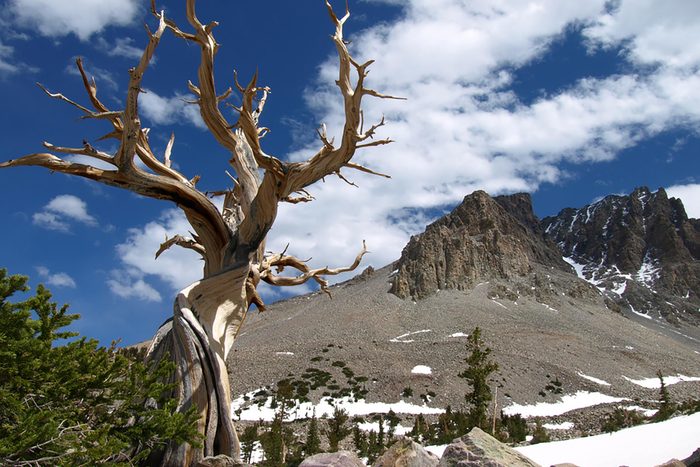
Great Basin National Park, Nevada
A great place for amateur astronomers and geologists alike, Great Basin National Park lies in east-central Nevada, near the border with Utah. Because of its remoteness, low humidity and minimal light pollution, Great Basin is one of the best places in the United States for stargazing. The park is also home to the stunning Lehman Caves, a sprawling limestone cave system filled with unique geological formations and bizarre underground flora and fauna. You have to reserve a ranger-led tour to visit the caves, which you can do through recreation.gov. In the late spring and throughout the summer, visitors to Great Basin will be rewarded with a display of colorful wildflowers that dot the valleys and peaks of the park. You can get an excellent vista of the whole park from the top of Wheeler Peak, accessible by hiking or by car.
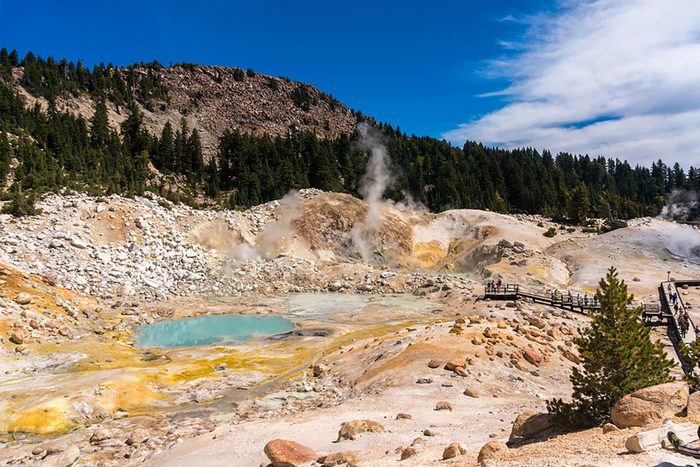
Lassen Volcanic National Park, California
The landscape of Lassen Volcanic National Park in northeastern California is one of a kind: it’s speckled with volcanic steam vents, boiling lakes and, yes, an active volcano. You can hike to many of the geothermic areas in the park, including the Cold Boiling Lake, Sulphur Works, and the fantastically named Bumpass Hell. There are several developed campgrounds available for car and RV camping, as well as the historic Drakesbad lodging cabin, available by reservation only. Begin your park visit at the Kohm Yah-mah-nee Visitor Center, where you can watch a film about the history of the park, join a guided tour, or talk with a ranger about best hikes in the area. Check road conditions before you set out for Lassen, as the weather can be unpredictable October-June.
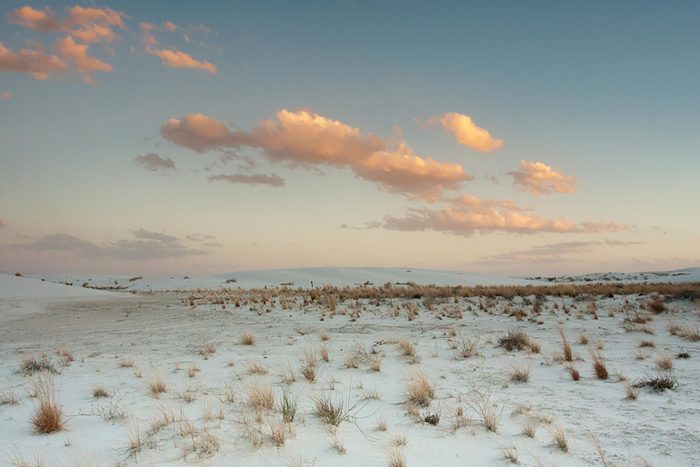
White Sands National Monument, New Mexico
In southern New Mexico just off of Interstate 25, the White Sands National Monument looks like the surface of a strange desert planet. The 275 square miles of blindingly bright gypsum dunes are nestled between the Sacramento and San Andreas mountain ranges, and provide an ideal opportunity for sledding and snowboarding due to the unique composition of the sand. You can also go on a number of hikes and scenic drives, such as the 8-mile Dunes Drive. There’s no shade to speak of throughout the monument, so be sure to dress accordingly and bring sunscreen. All camping in White Sands is primitive and first-come, first-serve, so bring all the water you’ll need if you plan to stay overnight.
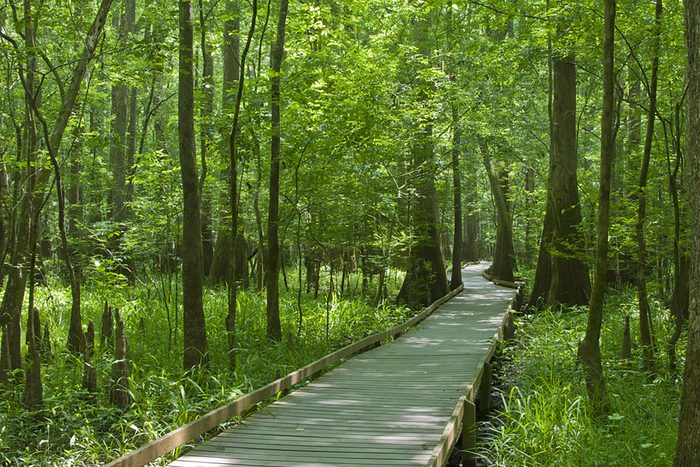
Congaree National Park, South Carolina
If you’re looking for a warmer spot for your spring getaway, consider visiting Congaree National Park. This national park sits in the middle of the floodplain between the Congaree and Wateree Rivers, which means that the 25 miles of hiking trails and 2.4 miles of wheelchair-accessible boardwalk do, occasionally, flood. Canoeing and kayaking are the best methods to explore this lush old growth forest: you can rent canoes and kayaks in the nearby city of Columbia. There are guided canoe tours and designated canoe trails, including the Congaree River Blue Trail, a 50-mile stretch of river that goes from the national park to Columbia. Whether you intend to explore the waters of the park or stay on dry land, it’s a good idea to wear clothes you don’t mind getting wet! Developed campsites are available at the Longleaf or Bluff Campgrounds by reservation, and backcountry camping is available for free with a permit. Still hesitant to book your trip? These stunning photos of national parks will help solidify your travel plans.